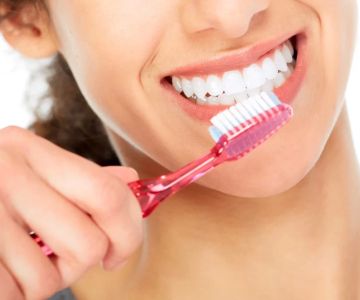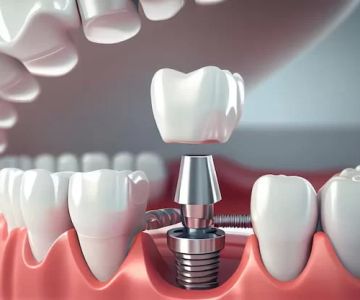How to Prevent Gingivitis at Home?
1. Introduction
Gingivitis, a common form of gum disease, occurs when plaque builds up on the teeth and gums, causing irritation and inflammation. It's a condition that affects millions of people around the world, but the good news is that gingivitis is preventable. With the right care and habits, you can avoid developing gingivitis or even reverse it in its early stages.
While it’s essential to visit a dentist for professional advice and treatment, you can take several steps at home to maintain your oral health and prevent gingivitis. In this article, we will explore various strategies, such as proper oral hygiene, diet adjustments, and lifestyle choices, that can help you keep your gums healthy and free from gingivitis.
2. The Importance of Oral Hygiene
Maintaining good oral hygiene is the most effective way to prevent gingivitis. Oral hygiene involves more than just brushing your teeth; it’s a daily routine that includes brushing, flossing, and using mouthwash. When you don’t clean your teeth and gums properly, plaque can build up, leading to irritation of the gums and ultimately gingivitis.
By incorporating regular brushing, flossing, and rinsing into your daily routine, you can remove food particles and plaque, keeping your gums healthy and reducing the risk of inflammation. Let's take a closer look at how each of these practices contributes to gingivitis prevention.
3. Proper Brushing Techniques
Brushing your teeth at least twice a day is essential to maintaining healthy gums and preventing gingivitis. However, brushing technique matters just as much as frequency. Many people use improper techniques, which can lead to ineffective cleaning or even damage to the gums.
- Use a soft-bristled toothbrush: Hard bristles can cause gum irritation, so it’s best to opt for a soft-bristled toothbrush that’s gentle on your gums.
- Brush for two minutes: Make sure to brush for at least two minutes each time, focusing on all surfaces of your teeth and gums, including the inner, outer, and chewing surfaces.
- Use circular motions: Brushing your teeth in small circular motions can help remove plaque more effectively than brushing back and forth.
- Don’t forget your tongue: Your tongue can also harbor bacteria, so gently brushing it helps improve your overall oral hygiene.
By using the right technique, you can ensure that your teeth and gums are thoroughly cleaned, reducing the buildup of plaque that leads to gingivitis.
4. The Role of Flossing in Preventing Gingivitis
Flossing is often overlooked but is just as important as brushing when it comes to preventing gingivitis. While brushing helps remove plaque from the surfaces of your teeth, flossing allows you to clean between your teeth and along the gum line, where your toothbrush may not reach.
- Floss once a day: Flossing once a day is enough to remove plaque from between your teeth and prevent the buildup that causes gingivitis.
- Use proper flossing technique: Gently slide the floss between your teeth using a sawing motion. Make sure to curve the floss around each tooth and slide it under the gum line.
- Don’t snap the floss: Snapping the floss can damage your gums, so be gentle to avoid any injury.
By adding flossing to your daily routine, you can enhance your oral hygiene and effectively prevent gingivitis by removing plaque and food particles from hard-to-reach areas.
5. Diet and Its Effect on Gum Health
Your diet plays a crucial role in your overall health, including your oral health. Eating the right foods can help keep your gums healthy and reduce the risk of gingivitis.
- Vitamin C: Vitamin C is essential for gum health as it helps strengthen the tissue. Foods like citrus fruits, berries, and leafy greens are excellent sources of this important nutrient.
- Calcium: Calcium strengthens your teeth and gums, so include dairy products, nuts, and leafy greens in your diet.
- Limit sugary foods: Sugary foods and drinks feed the bacteria in your mouth, which can lead to plaque buildup and eventually gingivitis. Try to limit your intake of sugary treats.
In addition to these nutrients, drinking plenty of water throughout the day helps keep your mouth hydrated and rinse away food particles, further protecting your gums.
6. Using Mouthwash Effectively
Using mouthwash is another effective way to prevent gingivitis and maintain good oral health. Mouthwash can help kill bacteria, freshen your breath, and reduce plaque buildup along the gum line.
- Choose the right mouthwash: Look for an antibacterial mouthwash that helps reduce plaque and gingivitis-causing bacteria.
- Use as directed: Follow the instructions on the label to ensure you’re using mouthwash properly. Avoid swallowing mouthwash, as it may contain ingredients that should not be ingested.
- Rinse for 30 seconds: Swish the mouthwash around your mouth for about 30 seconds to ensure it reaches all areas of your mouth.
Incorporating mouthwash into your daily routine can provide an extra layer of protection against gingivitis and keep your gums healthy.
7. Regular Checkups and Professional Cleanings
While at-home care is essential, regular dental checkups and professional cleanings are also important in preventing gingivitis. Dentists can identify early signs of gum disease and provide treatments to stop it from progressing.
- Visit your dentist regularly: Aim for a dental checkup at least twice a year. Your dentist can perform a thorough cleaning, remove tartar buildup, and identify any issues with your gums.
- Get a professional cleaning: Professional cleanings remove plaque and tartar that may be too stubborn for home care.
Regular checkups are a great way to stay on top of your oral health and prevent gingivitis from becoming a serious issue.
8. Conclusion
Preventing gingivitis starts with maintaining a consistent oral care routine, including brushing, flossing, using mouthwash, and eating a balanced diet. By following these simple steps at home, you can keep your gums healthy and prevent the onset of gingivitis. Don't forget the importance of regular dental checkups to stay ahead of any potential gum issues.
If you’re looking to learn more about preventing gingivitis or need additional resources, visit Dentistry Toothtruth for expert advice on oral care products and tips to keep your smile bright and healthy.







 William Farmer, DDS5.0 (5 review)
William Farmer, DDS5.0 (5 review) SimpliSmiles Farmingdale4.0 (386 review)
SimpliSmiles Farmingdale4.0 (386 review) Dr. Hecklin: Family & Cosmetic Dentistry5.0 (316 review)
Dr. Hecklin: Family & Cosmetic Dentistry5.0 (316 review) River Hills Dentistry4.0 (216 review)
River Hills Dentistry4.0 (216 review) Zakhor Dental Group4.0 (146 review)
Zakhor Dental Group4.0 (146 review) Dental Analysis Family Dentistry4.0 (92 review)
Dental Analysis Family Dentistry4.0 (92 review) The Importance of Oral Health Education During Pregnancy for a Healthy Pregnancy
The Importance of Oral Health Education During Pregnancy for a Healthy Pregnancy Best Tips for Brushing Your Teeth Properly for Healthy Gums: Essential Techniques for Oral Health
Best Tips for Brushing Your Teeth Properly for Healthy Gums: Essential Techniques for Oral Health Why Skipping Dental Checkups Can Lead to Bigger Oral Health Problems
Why Skipping Dental Checkups Can Lead to Bigger Oral Health Problems Advantages of Porcelain Dental Restorations
Advantages of Porcelain Dental Restorations How Can Diabetes Cause Tooth and Gum Problems? Preventing and Managing Oral Health Issues
How Can Diabetes Cause Tooth and Gum Problems? Preventing and Managing Oral Health Issues Healthy Habits for Promoting Good Oral Health and Hygiene: Tips for a Healthy Smile
Healthy Habits for Promoting Good Oral Health and Hygiene: Tips for a Healthy Smile